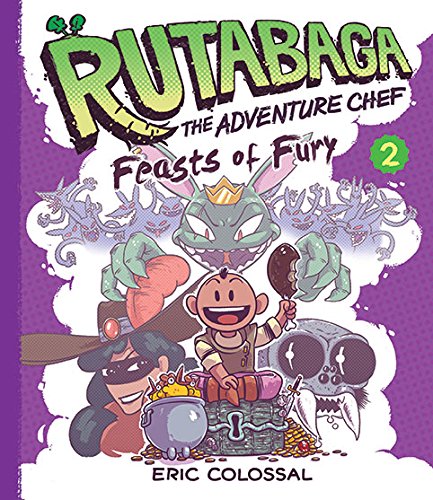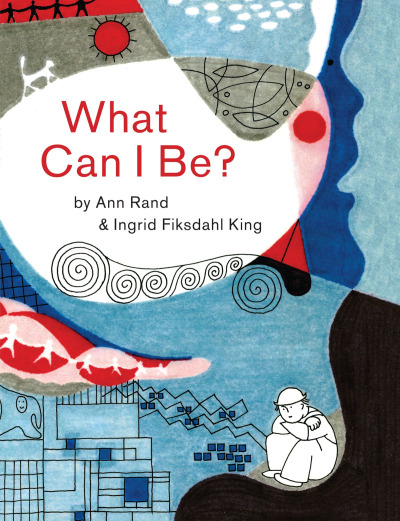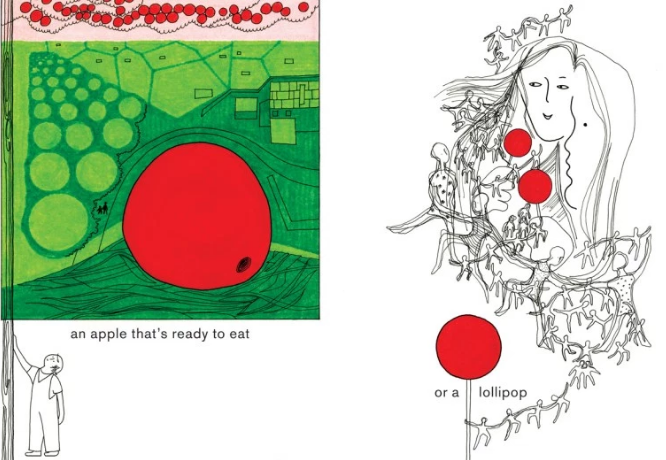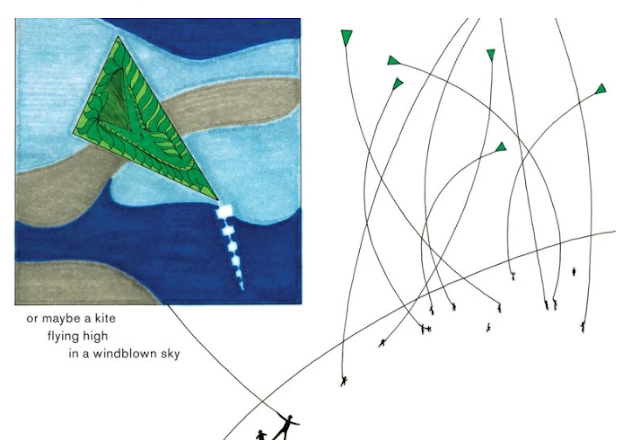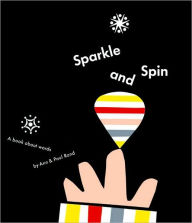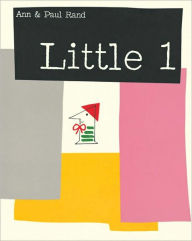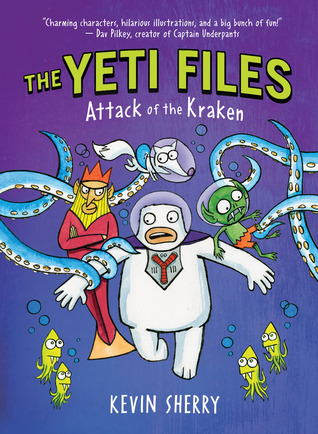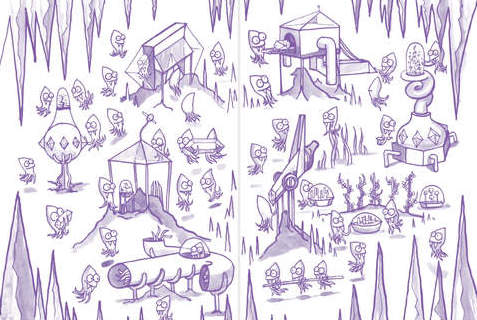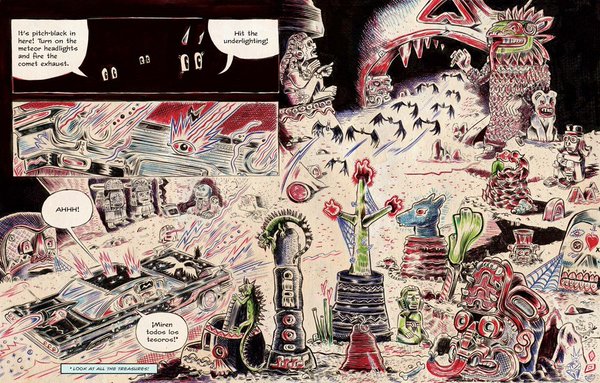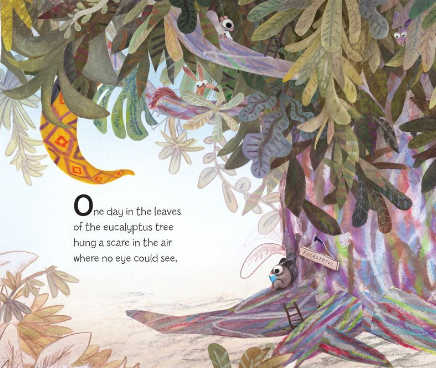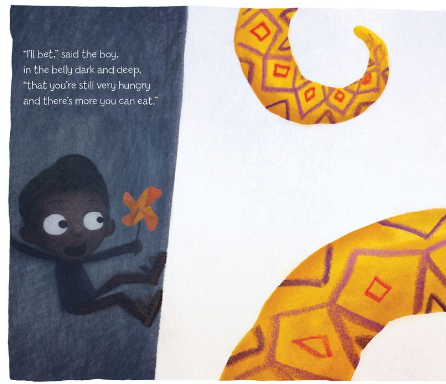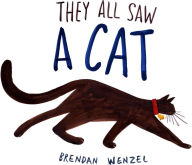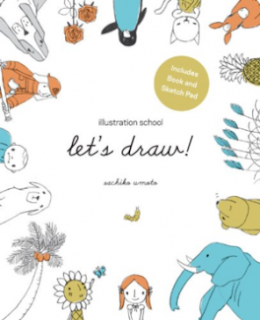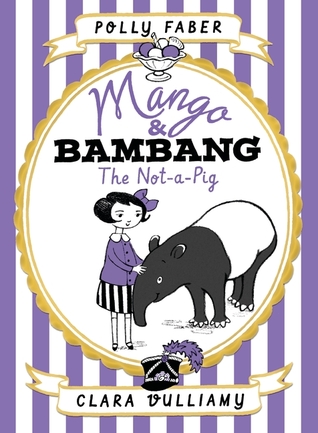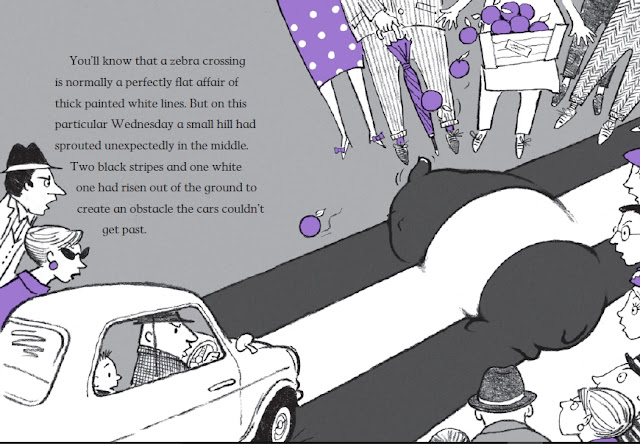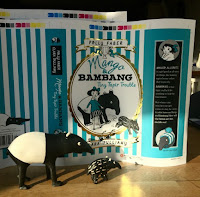 Last year I read and loved, as I do any book that makes food and cooking a central plot thread, Rutabaga the Adventure Chef #1 by Eric Colossal. Rutabaga, his pop-up kitchen and Pot, his trusty cauldron/pet, are back for more food, fun and adventure in Rutabaga the Adventure Chef: Feasts of Fury. And, as before, Rutabaga is a little bit goofy, a little bit gullible and a very passionate about cooking and feeding his friends, and even his enemies, from time to time.
Last year I read and loved, as I do any book that makes food and cooking a central plot thread, Rutabaga the Adventure Chef #1 by Eric Colossal. Rutabaga, his pop-up kitchen and Pot, his trusty cauldron/pet, are back for more food, fun and adventure in Rutabaga the Adventure Chef: Feasts of Fury. And, as before, Rutabaga is a little bit goofy, a little bit gullible and a very passionate about cooking and feeding his friends, and even his enemies, from time to time.
Rutabaga the Adventure Chef: Feasts of Fury finds Rutabaga and Pot in the land of the dreaded gubblins where he meets, and cooks for, an old timer who shares memories of a soup he ate more than 30 years ago, prepared - with a special, secret ingredient - by his uncle. But, as he leads Rutabaga to the spot where he thought his uncle found the secret ingredient, a big, fanged surprise is waiting for him.
From there, Rutabaga meets a troupe of actors and inspires a new play with an old favorite from his cooking school days, Poisoned Pot Pie. The pie isn't really poisoned, but there is a bean hidden in one of the individual pies and the person who gets it has to wash up. Rutabaga meets a mysterious thief/princess/liar named Minus and a very cool ingredient is part of a fantastic recipe that involves lock picking. When those dreaded gubblins do finally materialize, I think you can guess how Rutabaga gets himself, Pot and Minus out of a very dire predicament. And, quite happily, as with book 1, Colossal shares a handful of Rutabaga's special recipes - that kids can really make - at the end of the book. There are Popping Chocolate Spiders, Gubblin Snot, No-Bake "Poisoned" Cookies!
Source: Review Copy
